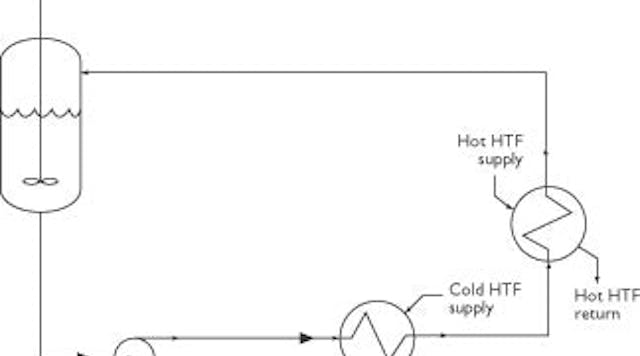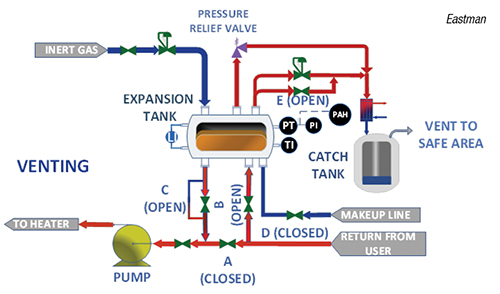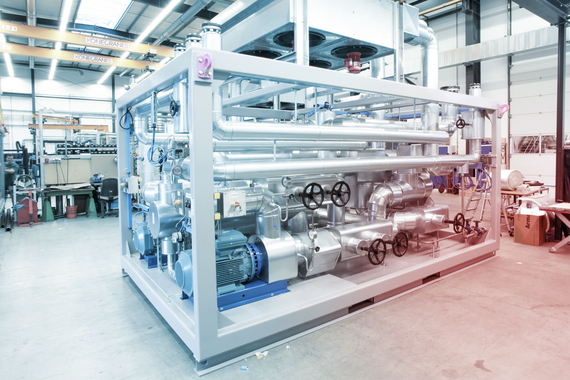Emerging Innovations Shaping the Future of DVS Heat Transfer Systems
A Comprehensive Guide to Selecting the Right Heat Transfer Solutions for Your Demands
Picking the appropriate Heat transfer system is crucial for functional effectiveness. Various systems deal with various needs, influenced by elements such as temperature array and fluid kind. Comprehending the concepts behind Heat transfer, such as conduction, radiation, and convection, is essential. In addition, evaluating power sources and maintenance practices can affect long-term performance. A closer exam of these factors to consider exposes exactly how to customize a system to details requirements. What should one prioritize in this complicated decision-making process?
Recognizing Heat Transfer: Secret Ideas and Principles
Although Heat transfer might appear like an uncomplicated concept, it encompasses a variety of concepts that are essential for efficient system layout. Understanding these concepts is crucial for designers and designers who aim to enhance thermal efficiency in various applications. Transmission, for circumstances, entails the transfer of Heat via solid materials, while convection describes the movement of Heat within liquids. Radiation, another vital concept, defines how Heat can be transferred via electromagnetic waves. Each of these mechanisms plays an important duty in determining exactly how energy relocates within a system. By thoroughly comprehending these concepts, specialists can make educated decisions, making sure that Heat transfer systems operate successfully and satisfy the details demands of their applications
Sorts Of Heat Transfer Equipments: An Overview
Comprehending the concepts of Heat transfer prepares for checking out the different kinds of Heat transfer systems readily available. Heat transfer systems can be classified largely right into 3 kinds: convection, radiation, and conduction. Transmission entails Heat transfer with solid materials, relying upon direct get in touch with in between bits. Convection, on the other hand, takes place in fluids (fluids and gases) where the motion of the liquid itself facilitates Heat transfer. Radiation includes the transfer of Heat with electro-magnetic waves and does not call for a medium, permitting it to occur in a vacuum cleaner. Each kind of system has distinct features and applications, making it essential for people and organizations to meticulously evaluate their details needs when selecting the most ideal Heat transfer solution.
Applications of Heat Transfer Equipments in Various Industries
Heat transfer systems play an important function across various sectors, impacting effectiveness and item high quality. In commercial manufacturing processes, they help with specific temperature control, while in food and beverage handling, they ensure safety and security and conservation. In addition, cooling and heating and environment control systems rely greatly on efficient Heat transfer to preserve comfortable settings.
Industrial Manufacturing Processes

Various commercial manufacturing procedures depend greatly on reliable Heat transfer systems to make best use of productivity and enhance product top quality. In fields such as metalworking, Heat exchangers play a necessary function in keeping ideal temperatures throughout welding, casting, and creating. These systems assure consistent Heat distribution, which is important for attaining desired product residential or commercial properties. Likewise, in the chemical production sector, Heat transfer systems help with precise temperature control during reactions, influencing yield and security. In textile manufacturing, reliable Heat administration is essential for dyeing and completing processes, affecting shade consistency and fabric quality. By choosing proper Heat transfer modern technologies, producers can improve power effectiveness and minimize functional costs, ultimately resulting in a much more lasting and competitive manufacturing atmosphere.
Food and Beverage Processing
Reliable Heat transfer systems are equally important in the food and drink handling industry, where preserving excellent temperatures is crucial for food safety and top quality. These systems play a crucial function in procedures such as sanitation, pasteurization, and cooking, ensuring that products are risk-free for intake and maintain their dietary value. Heat exchangers, for example, successfully transfer Heat in between liquids, optimizing power usage while reducing temperature level fluctuations. Additionally, refrigeration systems are essential for extending and protecting subject to spoiling items service life. The option of Heat transfer innovation directly impacts operational performance and product integrity, making it crucial for food and drink makers to select the ideal systems tailored to their particular processing requirements. This mindful selection eventually adds to customer satisfaction and food security.

HVAC and Climate Control
While several sectors rely upon Heat transfer systems for efficiency, COOLING AND HEATING (Heating, Ventilation, and Air Conditioning) plays a crucial role in preserving interior climate control throughout different settings. These systems use Heat transfer principles to regulate moisture, air, and temperature level top quality, making certain comfort and safety in household, commercial, and commercial atmospheres. Correctly developed cooling and heating systems enhance power performance, decrease operational expenses, and reduce ecological influence. In commercial buildings, for example, effective climate control adds to employee efficiency and consumer contentment. In commercial applications, cooling and heating systems help preserve ideal conditions for devices operation and item preservation. Choosing the right Heat transfer system is crucial for conference particular environment control demands and attaining general system click for more info efficiency.
Reviewing Power Resources for Heat Transfer Systems
In reviewing energy resources for Heat transfer systems, a comparison of sustainable energy options and fossil gas factors to consider is essential. Eco-friendly sources, such as solar and wind, offer sustainable alternatives that can reduce ecological impact. Alternatively, nonrenewable fuel sources stay widespread as a result of their recognized framework and power thickness, triggering a cautious assessment of both alternatives.
Renewable Power Options

Fossil Gas Considerations
Assessing fossil gas considerations is essential check it out for the effectiveness and sustainability of Heat transfer systems. Nonrenewable fuel sources, such as gas, oil, and coal, are standard energy sources that supply significant Heat outcome, making them popular choices for domestic and commercial applications. Nonetheless, their ecological influence, consisting of greenhouse gas emissions and resource depletion, elevates worries. When choosing a warmth transfer system, it is crucial to analyze the availability, expense, and regulatory factors connected with these fuels. Furthermore, the efficiency of fossil fuel systems have to be taken into consideration, as higher effectiveness can reduce some environmental downsides. Ultimately, a balanced strategy weighing efficiency and sustainability can assist decision-makers toward the most suitable Heat transfer remedy for their certain demands.
Elements to Consider When Selecting a Warm Transfer System
Selecting an ideal Heat transfer system requires careful factor to consider of different aspects that can substantially impact effectiveness and efficiency. One essential aspect is the operating temperature level range, which determines the products and layout suitable for the application. Additionally, the sort of liquid made use of in the system-- whether gas or fluid-- influences Heat transfer performance and compatibility. The system's size and capability should align with the certain needs of the procedure to stay clear of ineffectiveness. Power resource schedule is likewise necessary, influencing operating costs and sustainability. Additionally, the installment atmosphere, consisting of room restrictions and access for upkeep, plays a considerable duty in system option. Finally, regulative compliance and security criteria have to be considered to ensure the system fulfills all legal demands.
Upkeep and Effectiveness Optimization for Heat Transfer Systems
Preserving Heat transfer systems is vital for guaranteeing maximum efficiency and longevity. Routine upkeep activities, such as cleaning Heat exchangers and evaluating insulation, help prevent effectiveness losses due to fouling and thermal bridging. Furthermore, monitoring system parameters, consisting of stress and temperature level, permits very early detection of abnormalities, decreasing downtime and pricey repair services. Carrying out a preventive maintenance timetable can enhance efficiency and extend the lifespan of components. In addition, upgrading to advanced control systems can improve operational effectiveness by getting used to varying loads and conditions. By focusing on maintenance and efficiency optimization, drivers can achieve reduced energy usage, lower functional costs, and boosted general system reliability, inevitably causing better resource application and an extra lasting operation.
Future Patterns in Heat Transfer Technologies
As industries progressively focus on sustainability and power efficiency, future patterns in Heat transfer innovations are readied to undergo significant makeovers. Developments such as innovative products, including carbon nanotubes and nanofluids, assure improved thermal conductivity and efficiency. In addition, the combination of sustainable energy sources right into Heat transfer systems is gaining energy, advertising eco-friendly services. Smart technologies, consisting of IoT sensing units, are anticipated to reinvent tracking and control, enabling real-time information evaluation for maximized efficiency. The development of compact and modular systems will certainly facilitate less complicated installment and upkeep, providing to varied applications. These innovations show a change in the direction of even more lasting, reliable, and versatile Heat transfer options, lining up with worldwide energy goals and environmental criteria.
Frequently Asked Concerns
What Are the Environmental Influences of Heat Transfer Equipments?
The environmental impacts of Heat transfer systems can consist of greenhouse gas emissions, energy intake, and potential thermal air pollution. In addition, improper disposal of products and inefficiencies can add to resource exhaustion and community disturbance.
How Do I Compute the Cost-Effectiveness of a Heat Transfer System?
To calculate the cost-effectiveness of a heat transfer system, one must examine initial expenses, operational costs, upkeep needs, and energy effectiveness, comparing these variables against the expected life expectancy and efficiency of the system.
Can Heat Transfer Solution Be Made Use Of in Residential Setups?
Heat transfer systems can indeed be utilized in domestic setups. They give effective home heating and cooling down remedies, making homes more comfortable while potentially reducing energy prices. Their adaptability permits numerous applications in domestic atmospheres.
What Security Laws Put On Heat Transfer Equipments?
Security policies for Heat transfer systems normally consist of standards on procedure, installment, and upkeep. Compliance with regional building ordinance, producer specifications, and market standards is crucial to assure secure and efficient system efficiency in different applications.
How Do Various Materials Affect Heat Transfer Efficiency?

Transmission, for circumstances, includes the transfer of Heat through strong products, while convection refers to the activity of Heat within liquids. Comprehending the concepts of Heat transfer lays the foundation for discovering the numerous kinds of Heat transfer systems available. Heat exchangers, for instance, efficiently transfer Heat in between fluids, enhancing power use while decreasing temperature level fluctuations. In assessing power resources for Heat transfer systems, a comparison of renewable power alternatives and fossil gas considerations is crucial. Steels, such as copper and aluminum, conduct Heat efficiently, whereas insulators like rubber and glass reduce down Heat flow.